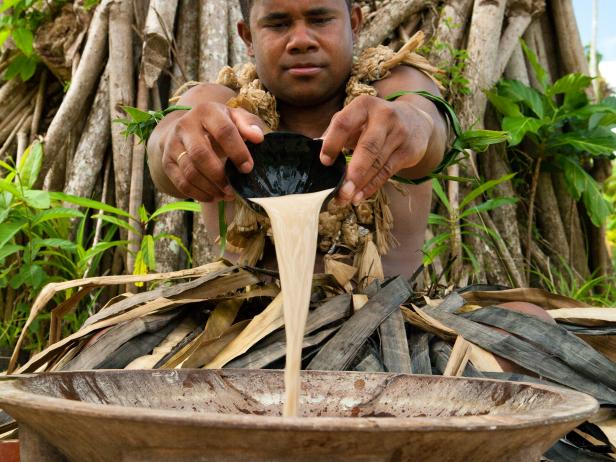A. Adams . October 30, 2024

For at least 1500 years, the indigenous people of Oceania have enjoyed and cherished Kava as a ceremonial drink, a way to gather, and a cornerstone of their culture. From Hawaii to Fiji, to the Island of New Zealand, the ground root of the Piper methysticum plant has been carefully prepared into a beverage that means so much to their varying cultures- and yet no matter where you are, the beverage seems to foster the same inclusive, peaceful atmosphere and uplifting feelings. It has been used in ceremonial settings as a symbol of respect, hospitality & social encouragement after careful almost ritualistic preparation. The process of brewing kava is nearly as important to its actual consumption, with many equating the process to a spiritual ritual practice. In many of these cultures, the preparation and consumption of Kava are sacred acts that foster a sense of community and connection, but in each area there are varying meanings behind the reasons for that.
Recent chemical and genetic analyses suggest that Piper methysticum was domesticated in northern Vanuatu about 3,000 years ago, where early farmers were attracted to the plant’s medicinal uses, and from there voyagers carried cuttings of the Piper methysticum plant onward to Fiji, much of Polynesia and northward to two Micronesian Islands. Despite the modern day reach of the kava culture, Vanuatu remains the epicenter of the kava production world, with more varieties of the plant still growing there than anywhere else in the world.
Kavalactones, the plant’s psychoactive ingredients, are located mostly in the rootstock, and act as a muscle relaxant, analgesic & diuretic, the subtleties of which elude pharmacological classification. The plant has loosely been classified as a sedative hypnotic, inducing feelings of relaxed sociability and emotional serenity for most who imbibe. “Unlike alcohol, kava does not influence the drinker’s ability to think clearly; nor is it a hallucinogen.”
In most rural areas of the country of Vanuatu, adult men have historically gathered after long days to enjoy a shell or two much like some cultures with beer or wine. In Vanuatu, the drink is much more informal, the sharing between neighbors, a gift to a host at a party, to settle neighborly disputes, or as an act of celebration at a variety of events. In Vanuatu, sessions of parliament are started with the sharing of a shell, foreign ambassadors are welcomed with a shell and on the Island’s Independence day the drink flows plentifully. To this day, the government works hard to take a social stance on kava especially in contrast to the use of alcohol. Government support of kava consumption has been apparent in the relatively low fees for nakamal business licenses (only $20 a year) and, conversely, in substantial taxes on imported alcohol. It is firmly believed that kava is the natural, customary beverage, whereas alcohol is an “alien poison,’ and statistics of crime and violence while under the influence of alcohol are often compared to that of kava. It has also been heavily noted that kava has been a largely used tool for those wishing to achieve sobriety from alcohol and other addictive substances, and that most who do make the switch are much more successful than those who don’t utilize it to calm their nerves while pursuing sobriety. In Polynesian societies, kava rituals are described more as a polished ceremony from the preparation & service all the way through the physical act of drinking it, and there is a clear class separation in the act. Beyond the regional implications of the beverage, on a more widespread level, the consumption of kava joins those who partake to their ancestors and the vast culture that came before them.
As we know, the kava culture has made its way to the United States, with many enjoying the relaxing and socially uplifting beverage and seeking the same atmosphere they get from a bar without the looming threat of temptation to drink alcohol. The first kava bar in the US hit St. Petersburg, FL in 2000, and many have followed since. Having visited a few myself, there is a resounding similarity in feedback from one location to the next- kava is a wonderful tool that can be used to bring people together without the presence of mind altering substances. Whether the atmosphere of the bar is likened more to that of a dive-bar or a classy & modern gastropub, one thing remains the same- an air of community, friendship and good ol’ ‘muddy’ fun.
Resources:
Photo Credit: Michelle Westmorland/Getty Images
“Kava, Cash & Custom in Vanuatu” – Lindstrom Lamont, Cultural Survival, 3/3/2010-
Recent Articles

Stephanie Rodzon . November 2, 2025
Rodzilla Chronicles: Part 13 – Rude Awakenings


